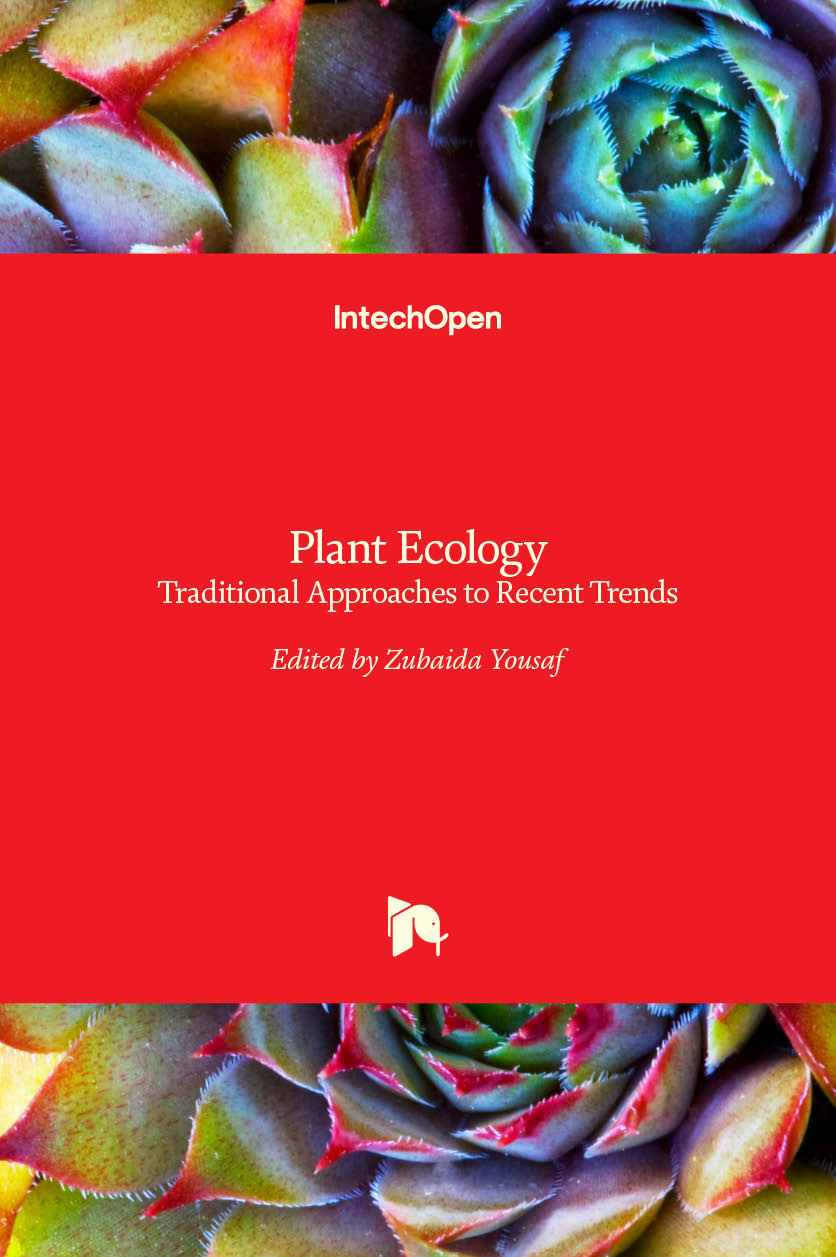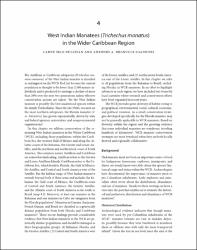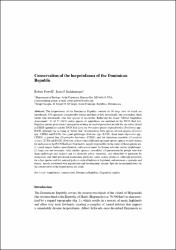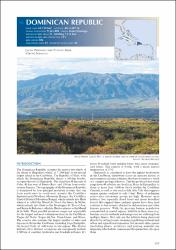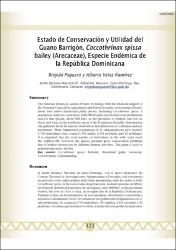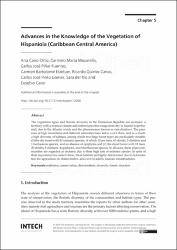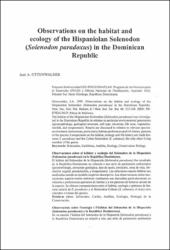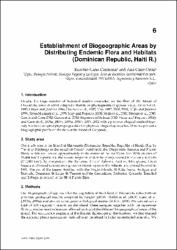Search
Now showing items 1-10 of 15
Biogeographical areas of Hispaniola (Dominican Republic, Republic of Haiti)
(2017)
[English] The island of Hispaniola is located between parallels 17 and 19 N and forms part of the Greater Antilles group in the Caribbean region. It covers an area of 76,484 km2 and has the highest altitudes in the whole ...
Recent echinoderms from Hispaniola
(2013)
A historical chronology of researches on the echinoderms of Hispaniola Island, from 1857 to the present is given, with reference to ten international expeditions including more than 50 localities, collections from national ...
Mycena sect. Hygrocyboideae in the mountains of the Dominican Republic
(2004)
A collection of Mycena epipterygia from montane cloud forest in the Dominican Republic was found to have one-fourth to one-half monosporous basidia mixed with bisporous basidia. It is described as a new variety, M. epipterygia ...
West Indian manatees (Trichechus manatus) in the wider Caribbean region
(2012)
In this chapter we address conservation of the remaining West Indian manatees in the Wider Caribbean (WCR), including those populations within the Caribbean Sea, the western Gulf of Mexico and along the Atlantic coasts of ...
Conservation of the herpetofauna of the Dominican Republic
(2011)
The herpetofauna of the Dominican Republic consists of 39 frogs (two of which areintroduced), 110 squamates (one possibly extinct and three or four introduced), one crocodilian, three turtles (one introduced), plus four ...
Important bird areas in the Caribbean : key sites for conservation : Dominican Republic
(2008)
The aim of this publication is simple: in a rational, scientifically robust way, it puts the spotlight on a Caribbean network of internationally important biodiversity sites "Important Bird Areas" (IBAs). In a region that ...
Estado de conservación y utilidad del guano barrigón, Coccothrinax spissa Bailey (Arecaceae), especie endémica de la República Dominicana
(2011)
El Jardín Botánico Nacional de Santo Domingo, con el apoyo financiero del Consejo Nacional de Investigaciones Agropecuarias y Forestales, está ejecutando un proyecto sobre cuatro palmas autóctonas amenazadas, entre las ...
Advances in the knowledge of the vegetation of Hispaniola (Caribbean Central America)
(2018)
The vegetation types and floristic diversity in the Dominican Republic are analysed, a territory with a tropical climate and ombrotypes that range from dry to humid-hyperhumid, due to the Atlantic winds and the phenomenon ...
Observations on the habitat and ecology of the Hispaniolan solenodon (Solenodon paradoxus) in the Dominican Republic
(1999)
The habitat of the Hispaniolan Solenodon (Solenodon paradoxus) was investigated in the Dominican Republic in relation to particular environmental parameters (geomorphology, geologicalstructure, soil type, elevation, life ...
Establishment of biogeographic areas by distributing endemic flora and habitats (Dominican Republic, Haiti R.)
(2012)
Despite the large number of botanical studies conducted on the flora of the Island of Hispaniola, some of which adopted a floristic or physiognomical approach with a phytosociological methodology, only few have adopted ...
